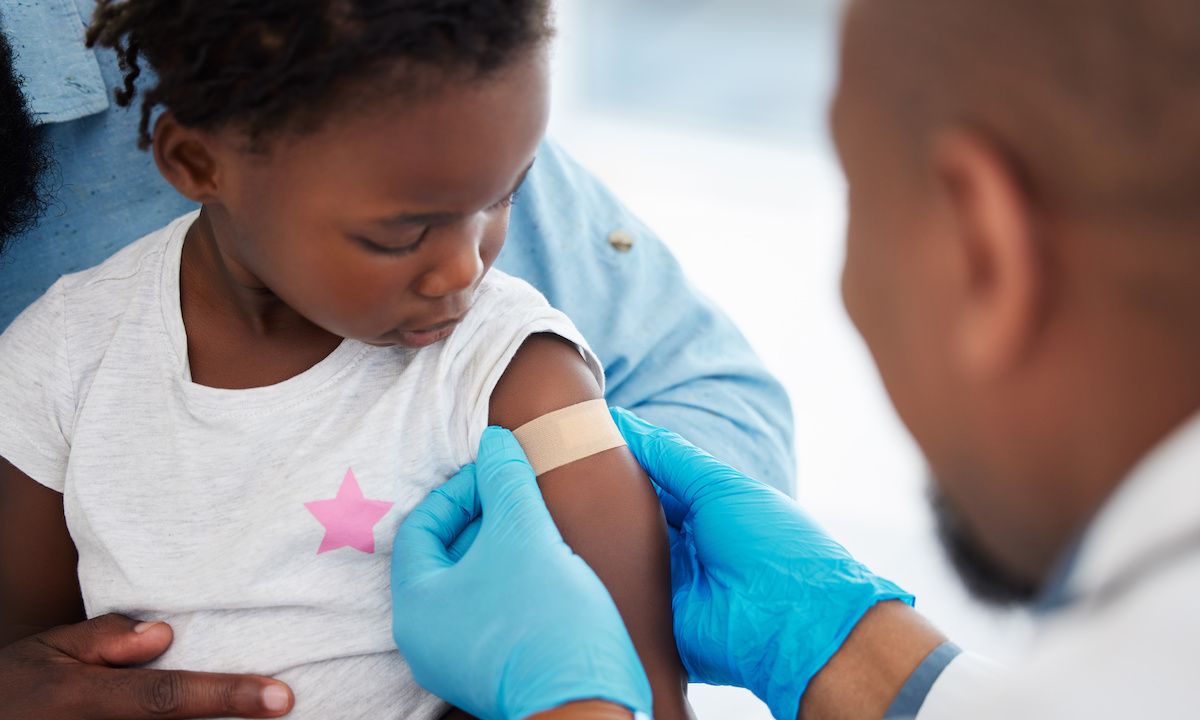Article
Trials Support Interchangeability of Merck’s V114 Vaccine With PCV13 in Infants for Pneumococcal Disease
Author(s):
Research presented during IDWeek 2021 showed data on V114, Merck’s investigational 15-valent pneumococcal conjugate vaccine.
Investigators from Merck presented 2 abstracts during IDWeek 2021 with data from phase 3 studies of V114, the company’s investigational 15-valent pneumococcal conjugate vaccine (PCV).
“Pneumococcal diseases (PD) caused by Streptococcus pneumoniae are a major health concern globally,” the authors wrote in one abstract. “In children, currently licensed pneumococcal conjugate vaccines (PCVs) provide protection against PD from vaccine serotypes, but other non-vaccine serotypes have emerged and contribute to most residual disease.”
One abstract featured data from the PNEU-DIRECTION interchangeability study,1 which evaluated V114 and Prevnar 13TM (PCV13), and the other evaluated PNEU-PLAN and the safety of catch-up vaccination regimens of V114.
The abstract on the PNEU-DIRECTION study showed that V114 was well-tolerated and had safety profile that was generally comparable to PCV13.
In addition to the 13 serotypes shared by PCV13, V114 contains serotypes 22F and 33F. “This phase 3 study evaluated safety and immunogenicity of mixed PCV13/V114 regimens when changing from PCV13 to V114 at doses 2, 3, or 4,” the study authors wrote.
In the phase 3 double-blind trial, 900 infants were randomized into groups in which all received a 3-dose infant primary series followed by one toddler dose
Each group received the following treatments:
- Group 1 received 4 doses of PCV13
- Group 2 started with PCV13 and switched to V114 at dose 4
- Group 3 started with PCV13 and switched to V114 at dose 3
- Group 4 started with PCV13 and switched to V114 at dose 2
- Group 5 received 4 doses of V114
Researchers measured immunoglobulin G (IgG) responses to the 15 pneumococcal serotypes at 30 days post-dose 3, prior to dose 4, and 30 days post-dose 4 (PD4). Among the 13 shared serotypes, the mixed-dose and 4-dose regimens of V114 both produced antibody responses generally comparable to a PCV13 4-dose regimen.
“Primary immunogenicity analysis was based on 13 shared serotype responses at PD4,” the authors said. “Safety was evaluated as the proportion of participants with adverse events (AEs).”
The authors concluded that these results support the interchangeability of V114 with PCV13 in infants.
The second abstract by Merck focused on the PNEU-PLAN study,2 which also followed V114 and PCV13. PNEU-PLAN evaluated the safety and immunogenicity—the ability of a foreign substance to induce an immune response—of the 2 vaccines as a catch-up vaccination in children who are not vaccinated against pneumococcal disease (PD) or received lower valency PCVs.
The study found that catch-up vaccination with V114 in healthy children aged 7 months to 17 years “had an acceptable safety profile, was well tolerated, and provided comparable immune responses to the 13 serotypes shared with PCV13, and higher immune responses to serotypes 22F and 33F.
In this double-blind study, solicited adverse events (AEs) were collected for 14 days after each vaccination and serious adverse events (SAEs) were collected throughout study participation. Immunogenicity was measured by anti-pneumococcal polysaccharide ST-specific IgG geometric mean concentrations (GMCs) 30 days after participants received their last vaccination.
In total, 606 healthy children between ages 7 months and 17 years were randomized into 2 groups. Half received V114 and the other half received PCV13, and the time of their vaccination was based on age-appropriate catch-up vaccination schedules.
A larger percentage of children aged 12 to 23 months reported AEs in the V114 group (79%) than the PCV13 group (59%), but the proportion of children aged 7 to 11 months and those aged 2 to 17 years who reported AEs in both groups was similar.
Stratified by age, the proportion of children who reported SAEs was comparable among each vaccination group.
The following percentages of SAEs were reported in each age group for V114 and PCV13, respectively:
- 7 to 11 months: 10.9%, 7.8%
- 12 to 23 months: 6.5%, 6.3%
- 2 to 17 years: 2.3%, 2.3%
“At 30 days after the last PCV dose, ST-specific IgG GMCs were comparable for the 13 shared STs and were higher in the V114 group for 22F and 33F,” the authors noted.
According to the authors, “No SAEs were reported to be vaccine-related, and no deaths occurred.”
References
- Bili A, Dobson S, Quinones J, et al. A Phase 3, Multicenter, Randomized, Double-blind Study to Evaluate the Interchangeability of V114 and Prevnar 13TM with Respect to Safety, Tolerability, and Immunogenicity in Healthy Infants (PNEU-DIRECTION). Abstract presented at: 10th Annual IDWeek; September 29, 2021. Abstract 27.
- Banniettis N, Wysocki J, Szenborn L, et al. Phase 3 Study to Evaluate the Safety, Tolerability, and Immunogenicity of Catch-up Vaccination Regimens of V114 in Healthy Infants, Children, and Adolescents (PNEU–PLAN). Abstract presented at: 10th Annual IDWeek; September 29, 2021. Abstract 24.




